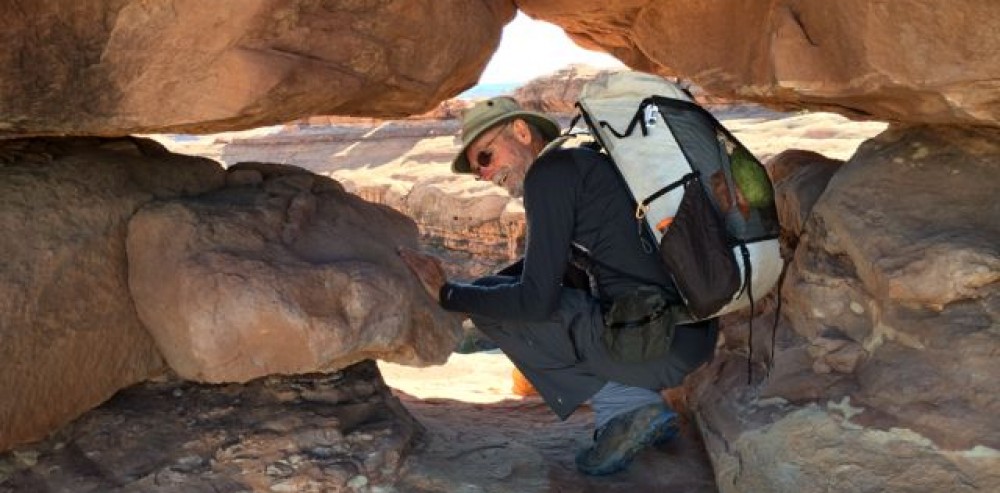 We arrived in Key West about 10:30 at night and thanks to a previous track in the navigation system were able to find our way to a place Dragonfly has safely anchored in the past, just north of the crowded cruiser and liveaboard anchorage.
We arrived in Key West about 10:30 at night and thanks to a previous track in the navigation system were able to find our way to a place Dragonfly has safely anchored in the past, just north of the crowded cruiser and liveaboard anchorage.
Jill surprised us in the morning announcing it was a Dragonfly tradition to have Egg McMuffins following an overnight passage into a calm anchorage. Quite a Welcome treat.
Shopping in Key West was limited to marine parts stores and the hardware store. We came back to town after lunch, but this time just to the fuel dock, where we put on the 18 gallons of diesel we’d used coming south from Tarpon and topped off the water tanks. Joe realized that his discounted Port Supply anchor he’d purchased in Tarpon was $70 cheaper at the local Key West marine store, so he hoofed it down the fuel dock with his new 40# to West Marine, returned the more expensive anchor, took the refund, and bought a larger 50 pound Delta for less than the price of the 40-lb he’d originally purchased.
 We’ve easily managed an hour a day on our boat chores. In fact some days we’ve done a fortnight’s worth. But one needs to remember we are still in shake-down mode, from laying up in the yard for five months, and there are countless systems to check out that can’t be done on the hard.
We’ve easily managed an hour a day on our boat chores. In fact some days we’ve done a fortnight’s worth. But one needs to remember we are still in shake-down mode, from laying up in the yard for five months, and there are countless systems to check out that can’t be done on the hard.
Here’s a list of a few things we did in the first days:

Al was up the up mast a couple of times, but not while we were underway.
Windlass repair
Fuel filter on starboard engine
Flash the generator
Reworked main electrical on panel
Reef line on main
Traced wires
Added carb cleaner to Yamaha
Only one nut fallen to the deck
Oh and one night at anchor Stanna was cleaning up the dinner dishes, going down the transom steps in the dark, missed the last step and tumbled pot, spoon and all into the water. Nothing was hurt, the pot was held onto (and rinsed clean), but the spoon was lost. (Al rescued the spoon the next morning in the daylight.) Once we helped her back on the swim deck she shook like a dog and only then realized her iTouch was in her pocket. Bummer.
That afternoon we motored up the chain of Keys to shorten the distance to our departure point if a weather window presented itself. We called Don Pole just before we dropped anchor just outside of his previous home port of New Found Harbour. Holding wasn’t good on the first drop and as we kept backing down we caught not one but two crab pots. One came loose easily but the port prop wound a deep snarl that Al couldn’t slice thru in the waning daylight and dive light illumination. Plus it was pretty damn cold to judge from the shivers he had out of the water. Next morning at first light Al was back in the water and spent 20 minutes more sawing thru the polypropylene line with a serrated knife.
 Tuesday we motored (wind on the nose) all day to Alligator Reef where we decided to stage our late evening departure across the Gulf Sream. GRIB forecast said we’d have the least wind and favorable conditions for about 75% of the distance before a more northerly wind shift and high velocity.
Tuesday we motored (wind on the nose) all day to Alligator Reef where we decided to stage our late evening departure across the Gulf Sream. GRIB forecast said we’d have the least wind and favorable conditions for about 75% of the distance before a more northerly wind shift and high velocity.
Our watches have been favorable because we got to sleep much of the way across and only had about 90 minutes to South Riding Rock when we came back on. Just as we could see the marker for the cut onto the Banks the wind rose up as expected, but midway across the 54-mile stretch winds died down again and we had to motor all the way to Northwest Channel Cut.
Without crab pots to deal with while on watch we had Quesadeas for dinner. Most of us were in our bunks about 8 pm when Jill, who was in the salon waiting out the last of a battery charge from the generator, smelt smoke and discovered a fire on a 4′ #10 glowing bright orange ground supply cable in the nav panels.























































